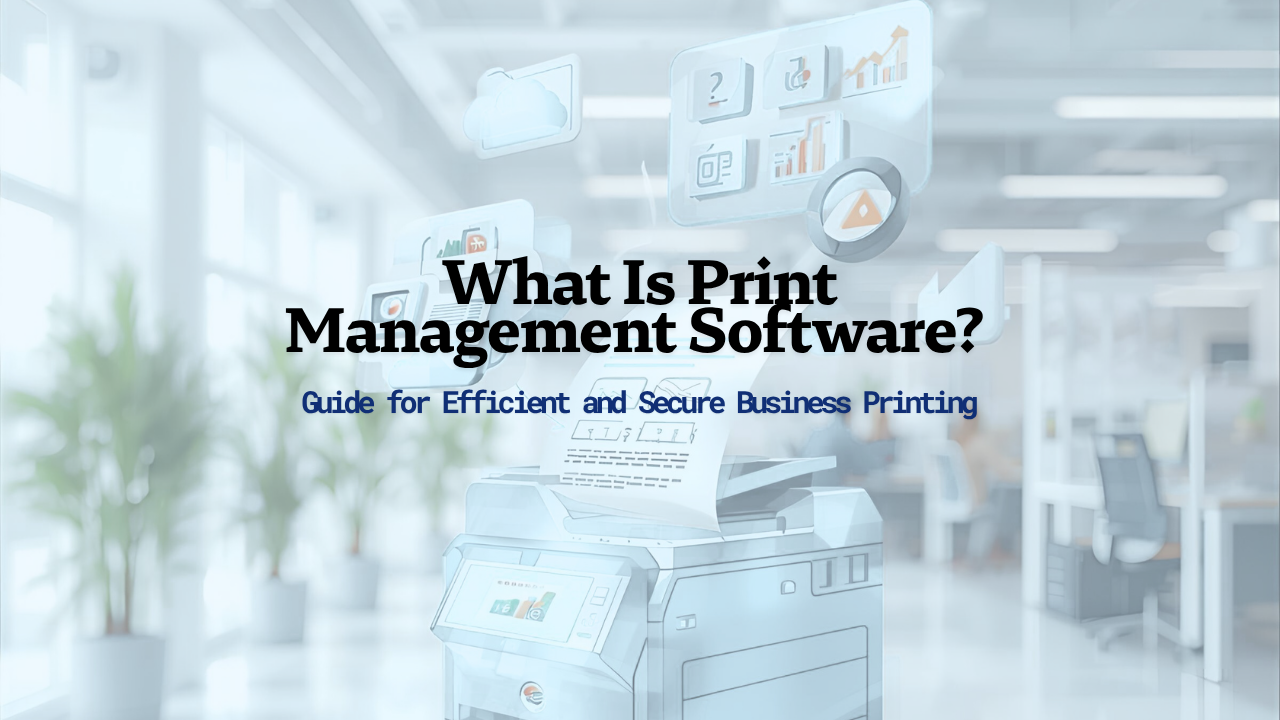In an era of increasing environmental awareness, businesses and consumers alike are scrutinizing their daily activities to reduce their ecological impact. While digital solutions have reduced reliance on paper, physical printing remains essential for many operations.
A key challenge in this pursuit has been the significant environmental impact of printer consumables, particularly toner cartridges. The push for eco-friendly printing is not just about using less paper; it's about fundamentally rethinking the materials we use.
Biodegradable toner is emerging as a pivotal innovation in this space, offering a tangible way to lower the carbon footprint associated with printing, reduce landfill waste, and move towards a more circular economy.
What Is Biodegradable Toner?

Traditional toner relies on petroleum-based plastics, while biodegradable toner is formulated with renewable, plant-based resources.
Biodegradable toner represents a significant departure from the composition of conventional toners used in laser printers. Traditional toner is a complex chemical powder, primarily composed of microfine plastic particles (polymer resins), carbon black for pigment, and various synthetic additives derived from petroleum.
These components are engineered for durability and longevity, which means they do not break down easily in the environment.
In contrast, biodegradable toner is formulated to minimize its long-term environmental persistence. It achieves this by replacing petroleum-based ingredients with components derived from renewable resources.
These materials often include:
- Biopolymers: Plant-based plastics derived from sources like corn starch or sugarcane.
- Organic Pigments: Colorants sourced from natural materials, reducing the reliance on heavy metals or synthetic dyes.
- Plant-Based Waxes and Resins: Natural binders that help the toner fuse to paper.
This formulation is philosophically similar to the development of other eco-friendly inks, such as vegetable-based inks or soy-based ink, which have become popular in offset printing.
By using ingredients that microorganisms can decompose, biodegradable toner is designed to break down more rapidly and safely at the end of its life, directly addressing the waste problem inherent in traditional printing supplies.
Why Traditional Toner Creates Environmental Concerns
Beyond simply buying a replacement cartridge, few users consider the lifecycle of their toner. However, the production, use, and disposal of conventional toner contribute to a range of pressing environmental challenges that undermine sustainable practices.
The cumulative effect across millions of offices and homes is a substantial environmental footprint.
Plastic footprint
Standard toner is fundamentally composed of microplastics. During the printing process and upon disposal, these tiny plastic particles can be released into the environment.
They do not biodegrade, instead persisting for centuries in soil and water systems, contributing to the global microplastic pollution crisis that affects ecosystems and potentially human health.
Petroleum-based production
The manufacturing of traditional toner is heavily reliant on fossil fuels. The polymers, pigments, and other synthetic additives are petroleum derivatives.
This dependence not only depletes finite non-renewable resources but also contributes directly to global carbon emissions throughout the extraction, refining, and manufacturing processes, enlarging the industry's overall carbon footprint.
Waste from cartridges
Millions of toner cartridges are discarded annually. According to industry estimates, over 375 million empty cartridges end up in landfills each year, where they can take up to 1,000 years to decompose.
While recycling programs and the use of recycled materials in new cartridges are improving, a significant portion still contributes to mounting e-waste, leaching residual chemicals into the ground.
Reduced microplastic pollution
By utilizing organic, plant-based materials, biodegradable toner directly mitigates the problem of persistent microplastic pollution.
Because these toners are designed to break down into simpler, non-toxic components, their end-of-life impact on soil and aquatic environments is drastically reduced compared to their plastic-based counterparts.
Lower reliance on fossil materials
The shift to plant-derived components is a crucial step in decoupling the printing supply chain from the volatile and environmentally damaging fossil fuel industry.
This transition supports a more circular and sustainable economic model by prioritizing the use of renewable resources, which can be grown and harvested responsibly.
Cleaner indoor air quality
A less-discussed but important benefit is the potential for improved indoor air quality. The printing process can release ultrafine particles and Volatile Organic Compounds (VOCs) into the air.
Formulations for biodegradable toners often contain fewer synthetic chemicals, which can lead to lower emissions of these airborne contaminants, creating a healthier environment for home and office workers.
Better end-of-life footprint
Biodegradable toner is designed to work within a system of environmental responsibility. It aligns perfectly with comprehensive sustainable printing practices, including cartridge take-back initiatives and the use of compostable packaging.
This ensures that the entire product lifecycle (from creation to disposal) is managed to minimize waste and maximize resource recovery.
Does Biodegradable Toner Affect Print Quality?
A primary concern for any business or individual considering a switch to sustainable alternatives is whether performance will be compromised. Early iterations of eco-friendly toners sometimes struggled to match the crispness and consistency of their traditional counterparts.
However, modern biodegradable toner formulations have made significant advancements.
For most standard office and home printing tasks such as reports, invoices, schoolwork, and internal documents, high-quality biodegradable toners now deliver excellent results, including sharp text, consistent black density, and reliable adhesion to paper.
The print quality is often indistinguishable from conventional toner for everyday use. For high-resolution graphic design or photographic printing, performance can vary by brand, so it is advisable to check manufacturer specifications to ensure it meets specialized requirements for color vibrancy and fade resistance.
Printer Compatibility
As a growing segment of the market, biodegradable toner is not yet universally compatible with all printer models. Compatibility is expanding rapidly as manufacturers recognize the increasing demand for sustainable options.
Most biodegradable toners are designed for popular models of laser printers. Before making a purchase, it is crucial to:
- Verify that your specific printer model is listed on the toner manufacturer's compatibility list.
- Consult customer reviews for real-world performance feedback.
- Check your printer's warranty terms, as some manufacturers may stipulate the use of their own branded supplies.
Opting for reputable brands that specialize in eco-friendly consumables helps ensure both reliable printer performance and genuine environmental benefits.
Cost Considerations
Currently, biodegradable toner may have a higher upfront cost than conventional or remanufactured toner cartridges. This price difference is typically due to the use of higher-quality, sustainably sourced raw materials and more complex production processes.
However, viewing the cost solely through the lens of the initial purchase price is shortsighted. The value of biodegradable toner extends to:
- Corporate Social Responsibility: Adopting sustainable practices enhances brand reputation and aligns with consumer and investor expectations.
- Reduced Environmental Liability: Minimizing waste and pollution can be a factor in long-term operational risk management.
- Supporting Innovation: Investing in green technologies helps drive the market toward more sustainable and affordable solutions in the future.
Tips for Responsible Home Printing
Switching to biodegradable toner is a powerful step, but it is most effective when integrated into a broader strategy of eco-friendly printing. To maximize your positive impact, combine its use with these sustainable printing practices:
- Choose Certified Paper: Use recycled paper or paper certified by the Forest Stewardship Council (FSC), which ensures it comes from responsibly managed forests.
- Optimize Printer Settings: Enable duplex (double-sided) printing and use "draft mode" for non-essential documents to save both paper and toner.
- Think Before You Print: Embrace digital workflows and share documents electronically whenever possible.
- Select Efficient Hardware: When upgrading, choose energy-efficient printers with an ENERGY STAR® rating to reduce electricity consumption.
- Recycle Responsibly: Always return empty cartridges to a designated recycling facility or use manufacturer take-back recycling programs.
The Future of Biodegradable Toner
The development of biodegradable toner is part of a larger movement towards a circular economy in the printing industry. Ongoing research and development are focused on enhancing performance, expanding printer compatibility, and lowering production costs. Future innovations we can expect to see include:
- Fully Compostable Cartridges: Cartridge housings made from bioplastics that can be composted along with residual toner.
- Improved Color Formulations: Broader and more vibrant color palettes for graphic-intensive applications.
- Integration with Print Management: Managed Print Services (MPS) will increasingly offer biodegradable toner as a standard component of their sustainability reporting and optimization services, helping businesses track and reduce their environmental footprint systematically.
As consumer demand grows and technology matures, biodegradable toner is poised to become a mainstream, cost-effective solution for environmentally conscious printing.
Conclusion
Biodegradable toner represents more than just an alternative product; it is a fundamental shift towards greater environmental responsibility in our daily printing habits. By replacing persistent plastics and petroleum-based chemicals with renewable, decomposable materials, it directly tackles the critical issues of landfill waste, resource depletion, and microplastic pollution. While considerations around cost and compatibility remain, the technology is rapidly advancing, offering excellent print quality for a wide range of applications.
For businesses and individuals committed to implementing meaningful Sustainable Printing strategies, adopting biodegradable toner is a crucial and actionable step. When combined with other smart habits like using recycled paper, optimizing printer settings, and choosing energy-efficient printers, it empowers users to significantly reduce their ecological impact without sacrificing the essential function of print. The journey to greener printing requires a holistic approach, and biodegradable toner is a cornerstone of that future.

.png)


.png)


























